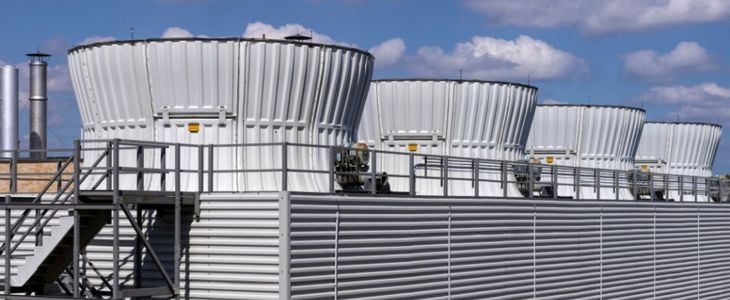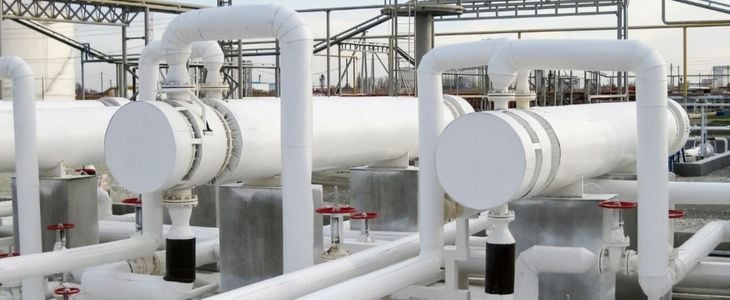What Is CHP (Combined Heat and Power) and When Is It the Right Solution?
The question “what is CHP?” is increasingly asked in the context of energy transition, decarbonization and the global push toward net-zero greenhouse gas emissions. Governments, industries and communities are re-evaluating how electricity, heating and cooling are produced—and how energy efficiency can be significantly improved.
As fully carbon-neutral heating solutions are still evolving, Combined Heat and Power (CHP) has become a key transitional technology. By producing electricity and useful thermal energy simultaneously, CHP reduces energy waste and improves overall system efficiency, making it a relevant option in many sustainability strategies.
What Is CHP (Combined Heat and Power)?
Combined Heat and Power (CHP)—also known as cogeneration—is a technology that produces electricity and thermal energy from a single fuel source in one integrated system.
Unlike conventional power generation, where excess heat is released into the environment, CHP systems capture and reuse that heat for:
-
Space heating
-
Industrial processes
-
Domestic hot water
-
Chilled water production (via absorption chillers)
How Does a CHP System Work?
CHP systems operate on the principle of simultaneous power and heat production. They are usually installed on-site or integrated into district energy networks, microgrids or industrial facilities.
There are two main CHP configurations:

Combustion Turbine or Reciprocating Engine CHP
In this configuration:
-
A combustion turbine or engine generates electricity
-
Hot exhaust gases pass through a Heat Recovery Unit (HRU)
-
Thermal energy is recovered as steam or hot water
This configuration is widely used in industrial facilities and district energy systems due to its flexibility and scalability.
Steam Boiler with Steam Turbine CHP
In this setup:
-
A boiler produces high-pressure steam
-
Steam drives a turbine to generate electricity
-
Remaining thermal energy is recovered from exhaust steam
This approach is common in industries with constant steam demand, such as chemicals or food processing.
What Are the Main Benefits of CHP?
CHP systems offer several advantages when correctly applied:
Higher Energy Efficiency
CHP systems can achieve overall efficiencies above 80%, significantly outperforming conventional power plants, which typically operate around 45–55% efficiency.Improved Resilience and Energy Security
CHP provides on-site power generation, allowing facilities to continue operating during grid outages. This resilience is especially valuable in hospitals, data centers, campuses and industrial plants.Support for Renewable Energy Integration
CHP can complement intermittent renewable sources such as wind and solar by providing stable, dispatchable thermal and electrical energy.Reduced Emissions
When paired with renewable fuels or integrated into optimized district energy systems, CHP can significantly reduce CO₂ emissions. Studies referenced by energy agencies show that emissions can be further minimized when CHP is combined with heat recovery, thermal storage or heat pumps.

Where Is CHP Commonly Used?
CHP is currently deployed in thousands of facilities worldwide, particularly where there is simultaneous demand for heat and electricity.
Typical applications include:
-
Industrial plants
-
Hospitals and healthcare facilities
-
Universities and campuses
-
District heating and cooling networks
-
Commercial and institutional buildings
-
Airports and transport hubs
The International District Energy Association (IDEA) frequently highlights CHP as a foundational technology in district energy systems where high operating hours justify the investment.
How Can CHP Be Combined with Large-Scale Heat Pumps?
One of the most efficient modern configurations is the integration of CHP with large-scale heat pumps.
Low-grade heat recovery
Residual heat from CHP systems—often below 40°C—can be:
-
Captured at the evaporator of a heat pump
-
Boosted to higher temperatures at the condenser
-
Reused for district heating or industrial processes
By adding compression work, heat pumps transform low-quality waste heat into high-quality usable heat, achieving very high coefficients of performance (COP).
This hybrid approach improves overall system efficiency and aligns better with long-term decarbonization strategies promoted by organizations such as Euroheat & Power.
Is CHP Always the Best Option?
Research and comparative studies—such as those cited in analyses of district heating evolution—suggest that CHP faces challenges in scenarios requiring:
-
Very high supply temperatures in the future
-
Full decarbonization without fossil fuels
-
Flexible, low-temperature district heating networks
In these cases, industrial heat pumps, thermal energy storage and renewable-based district heating systems may offer greater long-term certainty.
The optimal solution depends on:
-
Fuel availability
-
Temperature requirements
-
Operating hours
-
Grid conditions
-
Decarbonization targets
How to Choose the Right CHP System for Your Project
Selecting the appropriate CHP solution requires a project-specific engineering assessment.
Key factors include:
-
Thermal and electrical demand profiles
-
Availability of fuels or waste heat
-
Integration with district heating or cooling networks
-
Compatibility with heat pumps and thermal storage
-
Regulatory and environmental constraints
Organizations such as ASHRAE and IDEA emphasize that CHP should be evaluated as part of an integrated energy system, not as a standalone technology.
At ARANER, projects are assessed holistically—from concept design and system integration to manufacturing and long-term operation—to ensure maximum efficiency and sustainability.
Conclusion
Combined Heat and Power remains a powerful tool for improving energy efficiency and reducing waste, especially when integrated into district energy systems and hybrid solutions with heat pumps and thermal storage.
However, CHP should always be evaluated within a broader energy strategy. With expert engineering and system integration—like the approach followed by ARANER—CHP can play a key role in delivering efficient, resilient and sustainable heating and cooling solutions.
At Araner, we work to make sure each project achieves its maximum energy efficiency potential as well as meets environmental goals, being able to devise tailor-made district heating systems through our concept design, project overview, manufacturing and maintenance services.
Want to find out more about the answer to ‘what is CHP’ and see if it’s the right option for your project? At Araner, we can help you. Download our free guide about district heating alternatives (including CHP) or get in touch with us and speak directly to our team about the current possibilities in heating and cooling technologies to maximize sustainability and efficiency.










